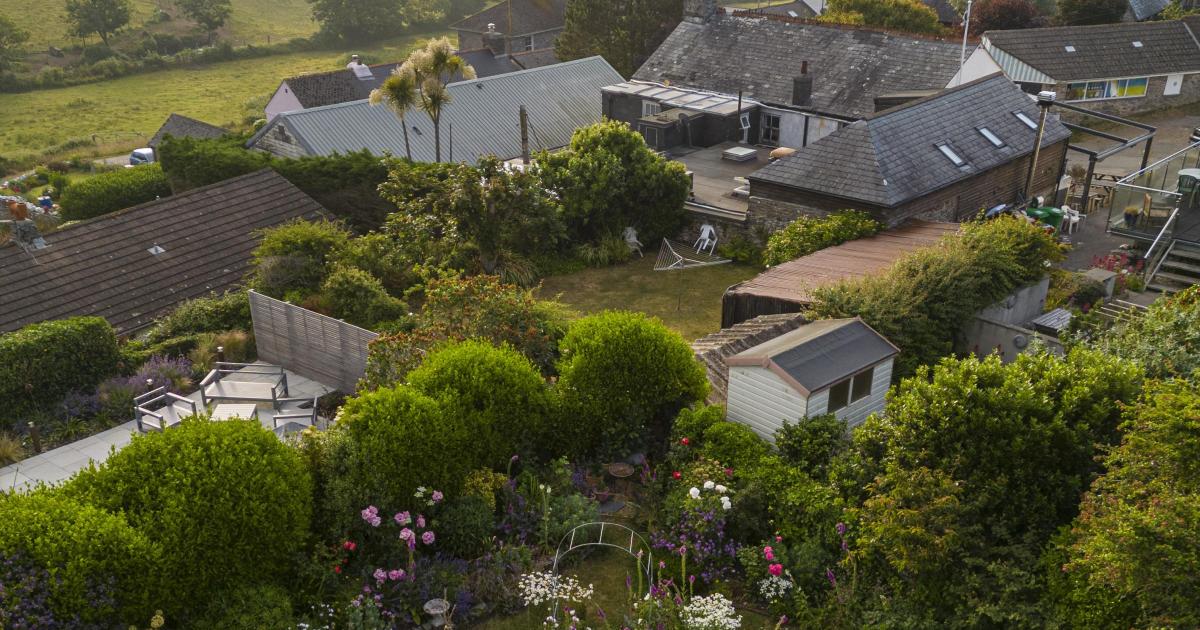In 2021, garden photographer Mark Bolton moved to Devon where he set about transforming a sparse back garden into his own ‘little paradise’ , echoing the cottage garden style he so admired. He tells Catherine Courtenay about his inspiring horticultural journey

I’ve always loved cottage gardens, and when I moved to a 19th-century cottage in East Prawle in 2021, I finally had the opportunity to create one of my very own. There were vestiges of a cottage garden at the back of the house and although the house itself needed a lot of work, I couldn’t wait to get out in the garden and create my own little paradise. I’ve been a garden photographer for more than 25 years, and the idea that the garden could become my outdoor studio was a temptation too strong to ignore!

As a professional photographer I’ve photographed gardens of every conceivable style but what I really love to shoot is a cottage garden – billowing, colourful borders alive with bees and scent, dotted through with focal points: rose arches, fences, rustic hazel wigwams, old tin baths filled with summer colour and, of course, a productive vegetable patch next to an impossibly pretty potting shed. To my mind, cottage gardens are the most beautiful and photogenic gardens of all and I think that’s one of the reasons for their enduring popularity.

As I say in my book, I’d describe a cottage garden as ‘a plot of one’s own’, filled with flowers and vegetables, useful and productive, a place to potter and a place to relax. It’s usually a smallish plot characterized by a jumble of simple plants that fill the space in an undesigned way; there are no rules, there is no pomposity and anyone can do it (I’m very much an amateur gardener). It’s haphazard, homespun and humble. There will likely be recycled and reclaimed features, a mixture of simple flowers, some annual and some perennial, vegetables, herbs, climbers and wild flowers. It will probably have a romantic feel, some hidden corners, a higgledy-piggledy path, a pond and some rustic plant supports. The shed will be filled with saved seeds, old tools and a pile of terracotta pots. It’s a haven for wildlife and it’s a haven for the gardener, somewhere to escape the daily grind and get your hands dirty.

The original cottage gardens weren’t really ‘designed’ in the conventional sense; they evolved from the need for a productive garden, and plants were pretty much popped in wherever there was a space.
In the 19th century, though, two great gardeners, William Robinson and Gertrude Jekyll, took the idea of the cottage garden and developed it to become a particular and recognisable style with its own set of requirements (although the great news is that these aren’t rigid). To achieve the look in your own garden, I’d suggest starting by assessing the plot, for example really getting to know where the sun falls throughout the day, and understanding the soil.
As I explain in A New Cottage Garden, I’d recommend gathering ideas from books, magazines, gardening programmes, Pinterest, Instagram etc, as well as visiting open gardens for inspiration. I’d then draw out a plan, thinking about things such as the positioning of paths, new beds, a patio area etc. Once you’ve read, thought, dreamed and planned – and once you’ve built the paths and borders etc – it’s time to populate the garden with plants … the stars of the show.

I’d say that roses are a must-have in a cottage garden, and they really do form the focal point around which other, less obvious, plants play second fiddle. Catmint (Nepeta ‘Six Hills Giant’ is a favourite) is one of those, and in combination with almost any rose is an integral part of the English summer garden.
Plants respond to their environment and will not thrive unless they have the right amount of light and nutrients and are happy in their position. Beth Chatto, one of the great gardeners, always said that you need the ‘right plant in the right place’. You can’t grow a sun-loving lavender in a shady bog garden. So, read up about the plants you want to grow and the ones that you are given. Will they enjoy the conditions you can provide? A happily self-seeded plant is a prime example of ‘right plant, right place’, growing there because the place suits it.

A cottage garden can actually really shine in deepest midwinter. On a dreary day nothing gladdens the heart more than the first sight of irises, crocus and snowdrops bravely, and somewhat incongruously, flowering above the otherwise lifeless-looking soil.

I’m very fond of the garden at Gravetye Manor in Sussex, which was the home of the ‘father of cottage gardens’ William Robinson. It’s not a typical small cottage garden, but it has many of the planting ideas and styles that Robinson popularised; particularly a much more natural, informal feel to the garden border. And the cottage garden at RHS Rosemoor in North Devon is a special place that I’ve photographed through many seasons, always looking good and (obviously) beautifully kept!
When are you at your happiest in your garden?
It’s mid summer, the foxgloves are sky high, the swifts are screaming above the house and I have a full day to mooch around doing jobs and tasks that have been on my mind for the last few days. I can leave the mobile phone and the laptop in the office and just pick up my well-worn garden tools. It’s the most wonderful feeling, and I can think of no better way to stay healthy, in both mind and body!
Mark Bolton is the author of A New Cottage Garden: A practical guide to creating a picture-perfect cottage garden, £22 Pimpernel Press. All images copyright Mark Bolton


